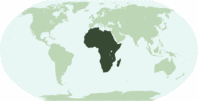Dypsis tenuissima
| Dypsis (DIP-sis) tenuissima (ten-oo-iss-EE-mah) | |||||||
|---|---|---|---|---|---|---|---|
 Habitat, Madagascar. Photo by Phil Arrowsmith. | |||||||
| Scientific Classification | |||||||
| |||||||
| Synonyms | |||||||
|
| |||||||
| Native Continent | |||||||
|
| |||||||
| Morphology | |||||||
| |||||||
| Culture | |||||||
|
| |||||||
| Survivability index | |||||||
|
| |||||||
| Common names | |||||||
|
| |||||||
Contents
Habitat and Distribution
Endemic to Madagascar. Only known from Andohahela. Lowland rain forest, slight mid slope; alt. 500-550 m.Description
Clustering palm in groups of 2-6. STEMS 25-50 cm high, 2-4 mm in diam.; internodes 1-4 cm. LEAVES 4-11 in the crown, entire or pinnate; sheath 2.3-6 cm, closed, with sloping, slightly laciniate shoulders and with scattered scales; petiole 2-4.6 cm, 1-1.5 mm diam., with scattered scales; entire leaves 11-19 cm long, midrib 1.7-4.5 cm, the lobes 8-15 x 0.7-1.3 cm (lobed 75-85 %), with 3-5 main veins, narrowly dentate apices, glabrous or with a few proximal scales; pinnate leaves with rachis 4.5-6 cm long, with scattered scales; leaflets 2-5 on each side of the rachis, the proximal 9-14 x 0.3-0.6 cm (main veins 1-2), median 9-13 x 0.3-4 cm (interval 0.8-1.2 cm, main vein 1), apices attenuate, distal 11-14 x 0.5-1 cm, connate for 3-4 cm, with 2-3 main veins and narrow dentate apices, glabrous. INFLORESCENCE interfoliar, unbranched, 9-16 cm long; peduncle 6-11 cm long, about 1 mm in diam.; prophyll 6-9 cm long, borne at 2.5-4 cm above the base of the peduncle, with few scattered scales especially on the margins (resembling thin ramenta), open at the apex for 0.6-1 cm; peduncular bract inserted at 6-9 cm from the base of the peduncle, deciduous; non-tubular peduncular bract 1-2 mm; rachilla 3.2-4.3 cm long, 1-2 mm in diam., with distant triads, glabrous. STAMINATE FLOWERS with sepals 0.7-1 x 0.6-1.1 mm, only slightly keeled; petals 2.2-2.5 x 1.2-1.4 mm; stamens 6, uniseriate, filaments c. 0.8 mm and thin, anthers 1.1-1.3 x 0.3-0.5 mm, versatile and parallel; pistillode < 1 mm. PISTILLATE FLOWERS with sepals 0.8-1.2 x 1.2-1.4 mm; petals 1.8-2.3 x 1.7-2.2 mm; staminodes 0.3-0.7 mm; ovary 2.1-2.4 x 1.8-2 mm. FRUIT ellipsoid, 9.5-10 x 5-5.5 mm, rounded at the apex; endocarp with almost free fibres. SEED ellipsoid, 8-9 x 3.5 mm, obtuse at both ends; endosperm homogeneous. (J. Dransfield and H. Beentje. 1995/Palmweb. Editing by edric.
Distinct in the very slender stems and the tiny, thin, much-toothed leaf. (J. Dransfield and H. Beentje. 1995).
Culture
Cold Hardiness Zone: 10a
Comments and Curiosities
This is one of the smallest palms in the world, with extremely slender stems. This is reflected in the species name, which is Latin for 'most slender'. (J. Dransfield and H. Beentje. 1995)/Palmweb.
Conservation: Endangered. Only known from a single site; numbers seen were less than a hundred. This area is outside the protected area. (J. Dransfield and H. Beentje. 1995)/Palmweb.
- IMAGE GALLERY
External Links
References
Phonetic spelling of Latin names by edric.
Special thanks to Geoff Stein, (Palmbob) for his hundreds of photos.
Special thanks to Palmweb.org, Dr. John Dransfield, Dr. Bill Baker & team, for their volumes of information and photos.
Glossary of Palm Terms; Based on the glossary in Dransfield, J., N.W. Uhl, C.B. Asmussen-Lange, W.J. Baker, M.M. Harley & C.E. Lewis. 2008. Genera Palmarum - Evolution and Classification of the Palms. Royal Botanic Gardens, Kew. All images copyright of the artists and photographers (see images for credits).
Dransfield, J. & Beentje, H. 1995. The Palms of Madagascar. Royal Botanic Gardens, Kew and The International Palm Society.
Many Special Thanks to Ed Vaile for his long hours of tireless editing and numerous contributions.








